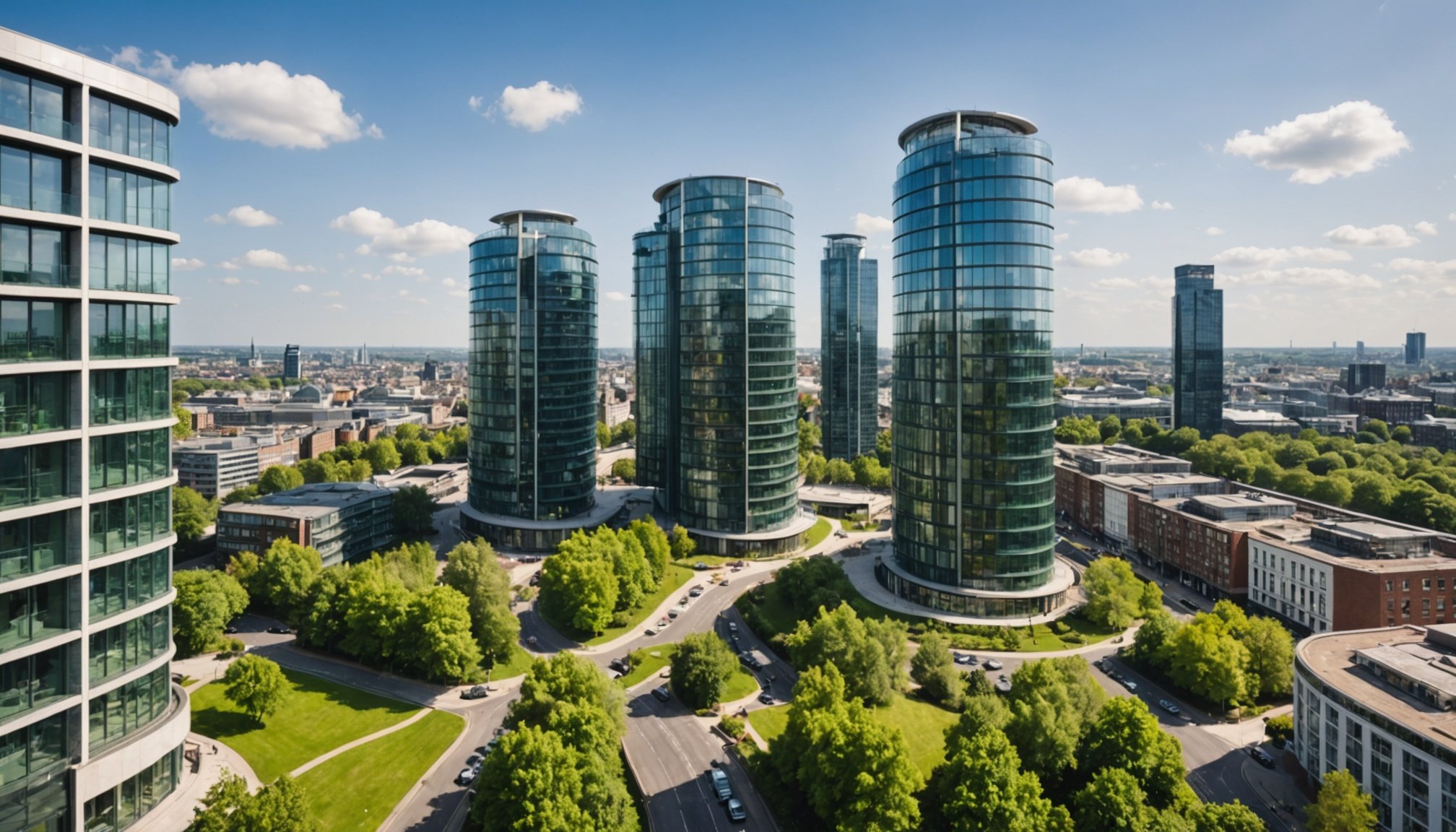As the UK property market evolves, developers face new challenges and opportunities in sustainable construction. Green financing solutions are emerging as essential tools for fostering eco-friendly practices while ensuring profitability. This shift not only meets regulatory demands but also aligns with a growing consumer preference for sustainable living. Explore effective strategies that can help property developers harness these finance options, paving the way for a more sustainable and profitable future.
Overview of Green Financing Solutions
Green financing is an essential tool in the realm of property development, playing a pivotal role in promoting sustainable development. It refers to financial investments directed towards projects that support environmental sustainability and eco-friendly initiatives. The importance of green financing lies in its ability to drive the construction of energy-efficient buildings, reduce carbon footprints, and foster long-term environmental benefits.
Additional reading : Assessing the Effects of UK Rail Network Expansions on Local Property Values: A Comprehensive Guide
In the UK, developers have access to a variety of green financing options. These include green bonds, which are specifically earmarked to fund environmentally friendly projects, and green loans, which offer favorable terms for projects that meet specific sustainability criteria. Additionally, government grants and subsidies are available to encourage developers to integrate sustainable practices into their projects.
The role of green financing in achieving sustainability goals cannot be overstated. It provides the necessary capital for developers to incorporate renewable energy sources, improve building efficiency, and use sustainable materials. By aligning financial incentives with environmental objectives, green financing ensures that property development contributes positively to the broader goals of reducing emissions and promoting a healthier planet.
Additional reading : Unlocking Higher Rental Profits: A Guide to Short-Term Letting Success for UK Property Owners
Green Financing Options for UK Property Developers
Navigating the landscape of green financing is crucial for UK property developers aiming to integrate sustainability into their projects. Among the most accessible options are green loans, which provide developers with favorable interest rates and terms for projects that meet certain eco-friendly criteria. These loans encourage the adoption of sustainable practices by reducing the financial burden on developers, making it more feasible to implement energy-efficient technologies and materials.
In addition to green loans, the UK government offers a variety of grants and funding opportunities to support sustainable development. These grants are designed to lower the initial costs of incorporating renewable energy sources and improve building efficiency. By alleviating some of the financial pressure, these government initiatives make it easier for developers to commit to environmentally responsible construction practices.
Moreover, developers can benefit from tax incentives associated with green financing. These incentives often include deductions or credits for investments in energy-efficient technologies, further enhancing the financial viability of sustainable projects. By leveraging these financial benefits, developers not only contribute to environmental sustainability but also gain a competitive edge in the market.
Successful Case Studies in UK Property Development
Exploring case studies of successful property developments in the UK reveals how green financing has been effectively leveraged to achieve sustainability goals. These projects provide valuable insights into the best practices and methodologies that can be adopted by developers seeking to integrate eco-friendly initiatives into their work.
One notable example is the Bristol Green Capital project, which utilised a combination of green loans and government grants to transform the city's infrastructure. This initiative focused on improving energy efficiency and increasing the use of renewable energy sources, setting a benchmark for sustainable urban development. The project faced challenges such as aligning financial incentives with environmental outcomes, but overcame these through strategic partnerships and community engagement.
Another successful case is the BedZED (Beddington Zero Energy Development) in South London. This development serves as a model for sustainable living, incorporating solar energy, water-saving technologies, and sustainable building materials. The project demonstrated the importance of meticulous planning and stakeholder collaboration in overcoming hurdles such as technical constraints and regulatory compliance.
Key takeaways from these projects highlight the significance of early-stage planning and the integration of sustainability goals from the outset. Developers learned that securing diverse funding sources and maintaining flexibility in project design are crucial for adapting to unforeseen challenges. By studying these successful projects, other developers can glean insights into the practical application of green financing and the tangible benefits it brings to property development.
Actionable Strategies for Leveraging Green Financing
To effectively harness green financing, property developers must adopt strategic approaches that align financial resources with sustainability goals. Identifying the appropriate green financing options begins with a thorough assessment of the project's sustainability objectives and requirements. Developers should evaluate different financial products, such as green loans or bonds, to determine which best suits their specific needs and offers the most favorable terms.
Successful implementation of green financing involves integrating sustainability into every phase of project planning. This requires developers to set clear environmental targets and incorporate eco-friendly practices from the outset. Early-stage planning should include selecting sustainable materials, designing for energy efficiency, and considering renewable energy sources. By doing so, developers can ensure that sustainability is a core component of the project rather than an afterthought.
Collaboration is key in leveraging green financing effectively. Engaging with financial institutions and sustainability experts can provide valuable insights and guidance. These partnerships can help developers navigate the complexities of green financing, ensuring compliance with sustainability criteria and optimizing financial benefits. By working closely with these stakeholders, developers can enhance their understanding of green financing mechanisms and improve the overall sustainability of their projects.
Regulatory Considerations for Green Financing in the UK
Understanding the regulations surrounding green financing is crucial for UK property developers. These regulations ensure that projects align with national sustainability goals and provide a framework for compliance. Key UK policies impacting green financing include the Climate Change Act, which mandates carbon reduction targets, and the Green Finance Strategy, which promotes sustainable investment.
To access green financing, developers must meet specific compliance requirements. These often involve demonstrating that projects will achieve significant environmental benefits, such as reduced emissions or increased energy efficiency. Compliance also requires adherence to standards set by financial institutions and government bodies, ensuring that projects contribute positively to sustainability objectives.
The impact of UK sustainability policies on property development is profound. By enforcing stringent regulations, these policies encourage developers to integrate sustainable practices from the outset. This not only enhances environmental outcomes but also aligns financial incentives with broader societal goals, fostering a more sustainable future for the property sector.
Financial, Environmental, and Social Benefits
Green financing solutions offer a trifecta of benefits that extend beyond mere financial gains. These solutions are pivotal in driving sustainability and fostering community engagement in property development projects.
Financial Advantages
The adoption of green financing solutions presents significant financial advantages for developers. By securing green loans or bonds, developers often benefit from lower interest rates and favorable terms, reducing the overall cost of capital. Additionally, tax incentives and government grants further alleviate financial burdens, making sustainable projects more economically viable. This financial support not only enhances the profitability of developments but also encourages the integration of eco-friendly practices from the outset.
Environmental Impact
The environmental impact of green financing is profound, contributing significantly to sustainability efforts. Projects funded through green financing often incorporate renewable energy sources, energy-efficient technologies, and sustainable materials. These initiatives lead to a reduction in carbon emissions and resource consumption, aligning with global sustainability goals. By prioritizing environmental considerations, developers can ensure that their projects contribute positively to the planet's health.
Social Benefits and Community Engagement
Beyond financial and environmental gains, green financing solutions also bring substantial social benefits. Sustainable projects often lead to improved community infrastructure and quality of life. By engaging local communities in the development process, developers can foster a sense of ownership and pride among residents. This community engagement ensures that projects are not only environmentally sustainable but also socially inclusive, creating vibrant and resilient neighborhoods. Through these efforts, green financing plays a crucial role in building a more sustainable and equitable society.
Resources for Further Exploration
For UK property developers keen on delving deeper into green financing, a wealth of resources, tools, and guides are available to aid in implementing sustainable practices. These resources are pivotal in navigating the complexities of green financing and ensuring successful project outcomes.
Recommended Resources
Property developers can access a variety of resources specifically tailored to support green financing initiatives. These include industry reports, case studies, and financial analysis tools that provide insights into successful strategies and emerging trends. Such resources are essential for developers seeking to align their projects with sustainability goals effectively.
Tools and Guides
Numerous tools and guides are available to assist developers in integrating sustainable practices into their projects. These include carbon footprint calculators, energy efficiency assessment tools, and sustainability planning guides. By utilizing these tools, developers can make informed decisions about material selection, energy usage, and overall project design, ensuring that sustainability is embedded from the outset.
Networks and Organizations
Joining networks and organizations dedicated to green financing can provide invaluable support and collaboration opportunities. These networks often offer workshops, seminars, and training sessions that keep developers informed about the latest advancements in sustainable development. Additionally, they facilitate connections with other professionals in the field, fostering an environment of shared knowledge and innovation.











